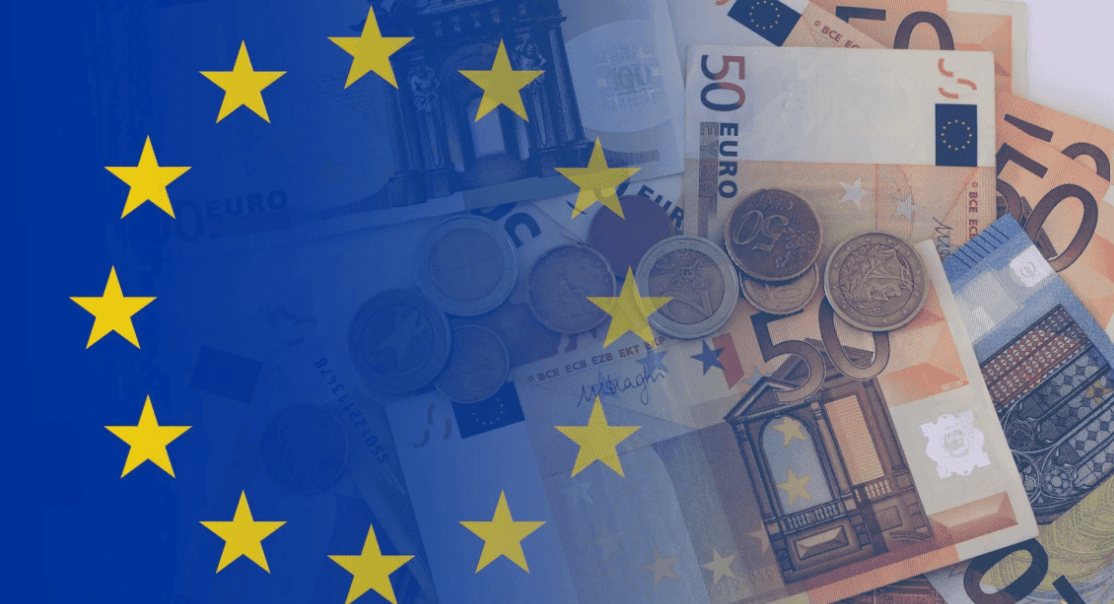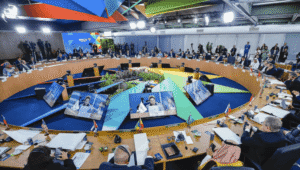During the recent monetary policy tightening cycle, US inflation has proven persistent, with discussions emerging about the effectiveness of monetary policy with respect to previous cycles. This column shows that when looking at a measure of core inflation that is ‘super sensitive’ to monetary policy, the Fed’s interest rate hikes had and still have a clear disinflationary role. On the other hand, the persistence of inflation, especially for core services, seems to have been related to the fiscal transfers granted during 2021.
The inflation surge that followed the Covid-19 pandemic induced many central banks around the world to tighten monetary policy forcefully. Between March 2022 and August 2023, the Federal Reserve embarked on a tightening cycle which resulted in a 525 basis point rate hike, the largest cumulative increase since the 1980s. The hiking cycle paused in September 2023 as disinflation appeared to be on track and in December 2023 the Fed signalled a pivot towards rate cuts. However, the Fed reverted to hawkish communication already in January as the disinflationary trend stalled throughout the first quarter of 2024. Since April, inflation restarted trending downwards, while the labour market continued softening. In his speech at Jackson Hole, Chair Powell stated that the “time has come for policy to adjust”.
The post-pandemic persistence in services inflation, amid the continued strength of domestic consumption and tight labour markets, sparked a debate about the effectiveness of the Fed’s monetary policy compared to previous tightening cycles. Moreover, the interaction between fiscal and monetary policy has come to the forefront of the recent policy debate. 1 Already in the early phase of the pandemic some studies warned about the potentially large inflationary effect of the historically large fiscal stimulus injected into the US economy to recover from the pandemic (see Bianchi et al. 2021, among others), especially if long-run inflation expectations were to become de-anchored. Therefore, this column aims to analyse the effects of monetary and fiscal policy on US inflation since the pandemic.
A measure of ‘super monetary policy sensitive’ core PCE inflation
The first question we tackle is whether monetary policy has been as effective in influencing inflation as in the past. To this end, we resort to a disaggregated analysis which looks at the responses of the third-tier components of core personal consumption expenditures (PCE) (i.e. at the third digit of disaggregation) to the Fed’s monetary policy over the period before the pandemic. We consider all the dimensions of monetary policy, by using the monetary policy shock developed by Bu et al. (2021), which is also clean from any information effects. The shock is used as an internal instrument in 14 Bayesian vector autoregression (BVAR) models, each one for the 14 spending categories of PCE considered. 2 Looking at the recent developments in the price categories that were historically most sensitive to monetary policy can shed light on monetary policy effectiveness after the pandemic.
Figure 1 Monetary policy sensitivity by product category: Response of the price index to a rate hike


Notes: The figure shows the response of the PCE price index by product category to a tightening monetary policy shock corresponding to 1% increase in rates after 36 months, based on BVAR models estimated over the period 1994m1-2019m12, with the shock by Bu et al. (2021) introduced as internal instrument. The BVAR contains product-specific and aggregate quantity and price indexes, together with the excess bond premium. Full bars refer to estimate for services and empty bars for goods.
Source: Authors’ calculations.
Results in Figure 1 show that, historically, for most service categories, prices decline in response to a monetary policy shock, in line with aggregate measures. 3 On the other hand, the price index of some durable goods categories rises in response to a hike in interest rates. 4 Overall, the most sensitive categories of core PCE to monetary policy represent half of the index. The higher sensitivity of services to monetary policy is possibly because services are not only more labour-intensive than goods, but also mostly non-tradable, hence domestic monetary policy might have a larger effect. Based on these findings, it is possible to derive a measure of ‘super monetary policy sensitive’ core PCE which consists of the categories of products that respond negatively to monetary policy tightening, weighted by the size of their response. Drawing from historical regularities, this measure can help assess the effectiveness of the recent tightening cycle.
Figure 2 Monetary policy and PCE inflation


Notes: The figure shows the ‘super monetary policy sensitive’ component of PCE, based on the subset of categories more sensitive to monetary policy, whereas the weight assigned to each of them depends on the sensitivity.
Source: BLS, Choi et al. (2022), and authors’ calculations.
Figure 2 shows that the current disinflationary process was largely driven by the most sensitive PCE categories, which appear to have reacted to the Fed’s monetary tightening (proxied by the proxy fund rate estimated by Choi et al. 2022), thus confirming the fact that the Fed’s monetary policy remains effective in taming inflation. 5 The disinflation trend stalled at the beginning of 2024, when the super sensitive inflation component started to pick up again. The downward trend resumed since April 2024 and, alongside the continued softening of the labour market, prompted markets to believe that an interest cut is likely to come in September. But if core services inflation has been responsive to monetary policy tightening, what made it particularly persistent?
The role of fiscal policy
The conclusion from many concurrent analyses (e.g. di Giovanni et al. 2023, Garcia-Revelo et al. 2024, Giannone and Primiceri 2024) is that demand shocks have been key drivers of US post-pandemic inflation. Here we look in more detail at the role of fiscal shocks in driving these demand shocks, thus possibly supporting early claims about the inflationary effects of the large fiscal packages adopted in response to the pandemic. The CARES act of March 2020 was worth $2.2 trillion (10% of GDP), and was followed by the ARPA in March 2021, worth $1.9 trillion (6.4% of GDP). As a result of these packages, the primary deficit of the US swelled from 2.8% in 2019, to 13.1% of GDP in 2020 and 10.5% of GDP in 2021. These packages largely consisted of direct transfers and payments to households to support the economy recovering from the pandemic shock. Since the impact of fiscal shocks on activity and inflation varies according to the type of fiscal instrument used, the analysis aims to disentangle spending shocks from (net) tax revenue shocks, drawing on the large literature on the macro effects of fiscal policy and the one on identification strategies for proxy BVARs.
In particular, shocks to fiscal spending, including both government consumption and investment, are instrumented with changes in military spending, in line with Miyamoto et al. (2019), among others. Regarding revenues, we follow the literature and look at net taxes, that is tax receipts net of transfers to households, subsidies, and interest payments. According to this definition, transfers would act as negative taxes. The identification strategy relies on the tax instrument provided by Mertens and Ravn (2011) with a narrative approach.
Figure 3 Role of fiscal shocks for core services PCE inflation


Notes: The figure shows the historical decomposition of PCE core services inflation in deviation from baseline with the role of government spending and tax shocks. Estimates are based on a proxy VAR model containing government spending, GDP, consumption, PCE core services inflation, net tax revenues, and a shadow rate computed by Wu and Xia (2016). Trending variables are detrended. The model is estimated over 1960Q1-2024Q1, Covid observations are handled with the method suggested by Lenza and Primiceri (2022).
Source: Authors’ calculations.
In line with recent literature (Ricco et al. 2016, Jørgensen and Ravn 2022), government spending shocks are found to behave like supply shocks. They have a limited effect on recent inflation, especially on core services inflation (see Figure 3, blue bars). On the other hand, net tax revenue shocks behave like demand shocks as they have a positive effect on demand and prices. Empirical evidence suggests that at the beginning of 2020 and 2021, net tax revenue shocks were very important drivers of the inflation surge (red bars). This evidence largely corresponds to the period when the pandemic fiscal packages were adopted and suggests that these transfers had long-lasting effects on inflation and contribute to explaining the persistence of core services inflation. 6 These results are in line with Bianchi et al. (2023) and Faria-e-Castro (2024), who find a large inflationary role for the fiscal stimulus implemented in the beginning of 2021.
Conclusions
Our findings support the view that monetary policy has been effective during the current tightening cycle. The persistence of PCE inflation, especially core services inflation, seems driven by negative shocks to fiscal revenues, such as those coming from the large transfers issued in early 2021. These shocks act like demand shocks, hence they are in line with recent discussions on the prominent role of demand shocks to explain US inflation. Looking ahead, the plans of both candidates to the US presidential elections envisage some fiscal expansion in the direction of reduced income tax revenues. Our analysis suggests that this might represent an upside risk for inflation in the US.
Source : VOXeu



































































